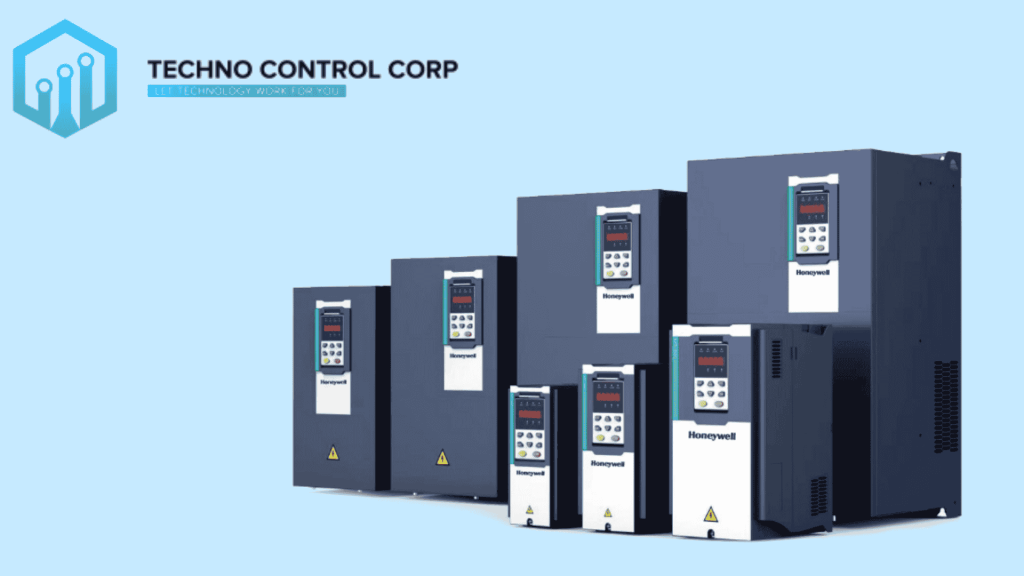Introduction
A Variable Frequency Drive (VFD) is an electronic device used to control the speed and torque of an electric motor by varying the frequency and voltage of the power supplied to it. VFDs play a crucial role in modern industrial applications, offering improved energy efficiency, better process control, and extended motor lifespan.
Importance of VFDs in Industrial Applications
- Energy Savings: By adjusting motor speed based on demand, VFDs significantly reduce energy consumption.
- Improved Motor Control: Allows for smooth acceleration, deceleration, and precise speed control.
- Equipment Protection: Reduces mechanical stress and prevents sudden surges in power, extending motor life.
How a Variable Frequency Drive Works
VFDs regulate the speed of an AC motor by controlling the power frequency and voltage supplied to it.
Key Working Principles:
- Frequency and Voltage Control: A VFD adjusts the frequency of the supplied AC power, directly impacting the motor speed.
- Rectification: Converts AC power to DC power.
- DC Bus: Stores and stabilizes the power.
- Inverter Stage: Converts DC back to AC with a controlled frequency and voltage.
Components of a Variable Frequency Drive
Rectifier:
- Converts incoming AC power to DC power.
- Uses diodes or thyristors for conversion.
DC Bus:
- Stores DC power and smooths fluctuations.
- Uses capacitors and inductors for voltage stability.
Inverter:
- Converts DC power back to AC with variable frequency.
- Uses Insulated Gate Bipolar Transistors (IGBTs) for efficient switching.
Control Unit:
- Manages speed, torque, and protection functions.
- Allows user programming and automation.
Types of Variable Frequency Drives
Voltage Source Inverter (VSI) VFDs
- Most commonly used.
- Provides smooth motor operation and high efficiency.
Current Source Inverter (CSI) VFDs
- Ideal for high-power applications.
- Provides regenerative braking capability.
Pulse Width Modulation (PWM) VFDs
- Offers precise speed control.
- Most efficient and widely used technology.
Benefits of Using a VFD
Energy Efficiency
- Reduces energy consumption by matching motor speed to system demand.
Extended Motor Lifespan
- Eliminates mechanical stress from sudden starts and stops.
Improved Process Control
- Allows for precise speed adjustments, ensuring smoother operations.
Reduced Maintenance Costs
- Minimizes wear and tear on motors and mechanical components.
Common Applications of VFDs
Industrial Automation
- Used in manufacturing (conveyors, CNC machines, robotic arms, etc.).
HVAC Systems
- Regulates fans, pumps, and compressors for optimized climate control.
Water and Wastewater Treatment
- Controls pumping stations, aeration systems, and filtration equipment.
Agriculture
- Optimizes irrigation pumps and grain handling systems.
Mining and Heavy Machinery
- Used in crushers, hoists, and milling machines.
How to Choose the Right VFD for Your Application
Motor Compatibility
- Check voltage, power rating, and phase compatibility.
Load Type Consideration
- Constant Torque Loads: Conveyors, compressors.
- Variable Torque Loads: Pumps, fans.
Control Requirements
- Determine if your application needs speed control, feedback systems, or remote monitoring.
Protection Features
- Look for overload protection, thermal management, and short-circuit prevention.
Installation and Maintenance of VFDs
Installation Steps
- Proper wiring, grounding, and programming are essential.
- Follow manufacturer guidelines for safe installation.
Programming and Parameter Setup
- Configure motor speed, acceleration, and braking parameters.
- Set safety limits and overload protection settings.
Troubleshooting Common Issues
- Overheating: Ensure proper ventilation and cooling.
- Motor Instability: Check for incorrect frequency settings.
- Power Surges: Use surge protectors and quality wiring.
Challenges and Limitations of VFDs
Harmonic Distortion
- VFDs can introduce harmonic currents affecting power quality.
- Use filters or harmonic mitigation techniques to reduce interference.
Initial Cost Considerations
- Higher upfront costs but significant long-term energy savings.
Environmental Factors
- Ensure VFDs are protected from extreme temperatures, dust, and moisture.
Future Trends in Variable Frequency Drives
Smart VFDs with IoT and AI
- Remote monitoring and predictive maintenance capabilities.
Energy-Efficient Designs
- Advanced semiconductor technologies to reduce power loss.
Wireless Monitoring & Diagnostics
- Cloud-based real-time system diagnostics for remote troubleshooting.
Conclusion
VFDs play a crucial role in modern industrial applications, offering energy efficiency, precise control, and reduced maintenance costs. Whether used in HVAC, manufacturing, agriculture, or mining, VFDs enhance operational efficiency and sustainability. Investing in a Variable Frequency Drive ensures cost-effective, reliable, and optimized motor performance.

